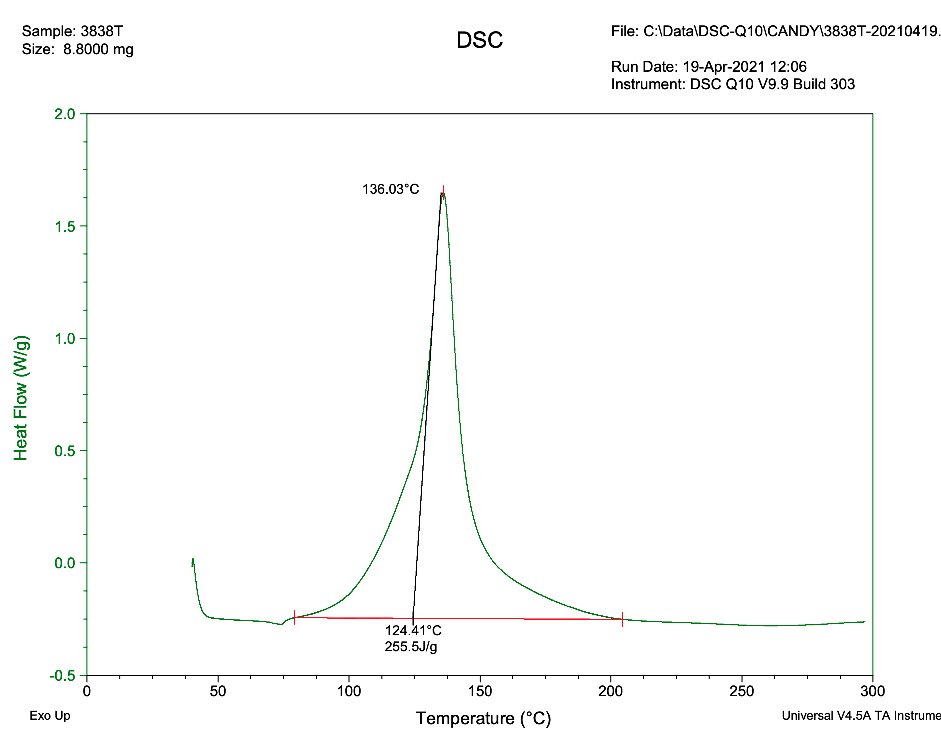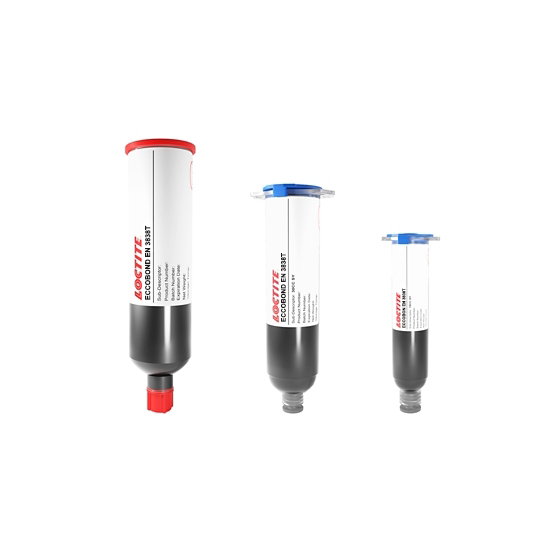LOCTITE ECCOBOND EN 3838T
- PCB Coating
- Very Low Tg
- Fast cure at 130°C
Product Description
LOCTITE ECCOBOND EN 3838T is a black epoxy encapsulant that is designed to provide a flexible, low Tg material for encapsulating components on a PCB. When cured, this material provides physical protection and stable electronic performance and protection in temperature/humidity/bias testing.
LOCTITE ECCOBOND EN 3838T is a single component, reworkable, heat curable PCB coating that cures fast at moderate temperatures and is typically used for CPG and BGA lead free applications.
Cure Schedule
- 8 minutes @ 130°C
Technical Specifications
| General Properties | |||||||
| Pot Life Pot Life Pot life is the amount of time it takes for the viscosity of a material to double (or quadruple for lower viscosity materials) in room temperature after a material is mixed. It is closely related to work life but it is not application dependent, less precise and more of a general indication of how fast a system is going to cure. | 72 hours | ||||||
| Specific Gravity Specific Gravity Specific gravity (SG) is the ratio of the density of a substance to the density of a reference substance; equivalently, it is the ratio of the mass of a substance to the mass of a reference substance for the same given volume. For liquids, the reference substance is almost always water (1), while for gases, it is air (1.18) at room temperature. Specific gravity is unitless. | 1.2 | ||||||
| |||||||
| Physical Properties | |||||||
| Thixotropic index Thixotropic index Thixotropic Index is a ratio of a material s viscosity at two different speeds in Ambient temperature, generally different by a factor of ten. A thixotropic material s viscosity will decrease as agitation or pressure is increased. It indicates the capability of a material to hold its shape. Mayonnaise is a great example of this. It holds its shape very well, but when a shear stress is applied, the material easily spreads. It helps in choosing a material in accordance to the application, dispense method and viscosity of a material. | 5.8 | ||||||
| Viscosity Viscosity Viscosity is a measurement of a fluid’s resistance to flow. Viscosity is commonly measured in centiPoise (cP). One cP is defined as the viscosity of water and all other viscosities are derived from this base. MPa is another common unit with a 1:1 conversion to cP. A product like honey would have a much higher viscosity -around 10,000 cPs- compared to water. As a result, honey would flow much slower out of a tipped glass than water would. The viscosity of a material can be decreased with an increase in temperature in order to better suit an application | 6,700 mPa.s | ||||||
| Mechanical Properties | |||||||
| |||||||
| Thermal Properties | |||||||
| |||||||
| Glass Transition Temperature (Tg) Glass Transition Temperature (Tg) The glass transition temperature for organic adhesives is a temperature region where the polymers change from glassy and brittle to soft and rubbery. Increasing the temperature further continues the softening process as the viscosity drops too. Temperatures between the glass transition temperature and below the decomposition point of the adhesive are the best region for bonding. The glass-transition temperature Tg of a material characterizes the range of temperatures over which this glass transition occurs. | 2 °C | ||||||
| Thermal Conductivity Thermal Conductivity Thermal conductivity describes the ability of a material to conduct heat. It is required by power packages in order to dissipate heat and maintain stable electrical performance. Thermal conductivity units are [W/(m K)] in the SI system and [Btu/(hr ft °F)] in the Imperial system. | 0.22 W/m.K | ||||||
Additional Information
What are the differences between EN 3838T and 8387B?
Both 3838T & 8387B have a rather high thixotropic index and this indicates a low amount of self-leveling (the viscosity at low shear rates is too high to allow the material to move under its own weight). When we compare the viscosity data on TDSs, we see that they are measured using different spindles and at different rotation speeds. The reason for this is, that 8387B is developed for smaller deposits in die attach and sensor bonding applications (less weight to move the product), while 3838T is developed for larger deposits with higher thixotropy to prevent running out. Based on the viscosity data, we see that ‘viscosity almost at rest’ of 3838T is higher than 8387B :
- 8387B has 9500 cPs @ 5rpm and TI >4.5 (so ~45000 cPs @ 0,5rpm)
- 3838T has 6700 cPs @ 20rpm and TI of 5.8 (so ~40000 cPs @ 2rpm and much higher at lower rpm)
One way to reduce the viscosity (at all shear rates) is to increase the temperature of the product and or substrate. Warming to ~40C will give a big difference in viscosity (every 10 °C double or half). Going much higher in temperature could give some gelling, but customers should establish the best temperature by experiment.
LOCTITE ABLESTIK 3838T should be able to cure, based on this DSC curve, at around ~110°C (lower than that can be risky). A starting cure time can be 30 min but we advise to optimise it for your requirements.




